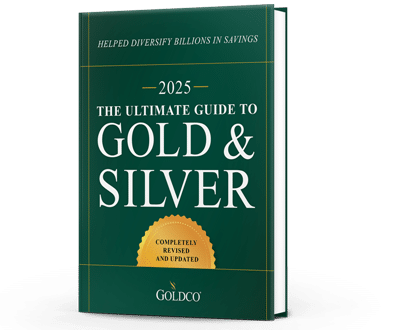6 Indicators of a Potential Recession
It seems that in the media today there are more and more mentions of the dreaded R-word: recession With growing economic uncertainty, the threat of potential recession seems to be growing as...
Economy

One of the defining characteristics of President Trump’s tenure was the unmasking of how elites felt about the common American. President Trump positioned himself as the champion of the ignored and unheard masses, while the coastal elites and their Wall Street and media cronies openly looked down their noses at Main Street America. Rather than attempting to hide their disdain for working Americans, they proudly trumpeted their contempt for those who held to traditional conceptions of the American Way. That attitude continues to the present and, if anything, continues to intensify.
Average Americans understand now that the New York, Washington, and West Coast elites don’t have their best interests in mind. They see every month as prices rise on food, gas, and housing that no one cares if their cost of living is increasing. No one cares if the average American is finding it more and more difficult to make ends meet. No one cares if the average American has to work harder and harder to be able to afford less and less.
Many Americans have come to that sad realization, and they realize that no one from Washington is going to bail them out. Stimulus payments are merely a band-aid covering up a massive, festering wound.
Staying ahead of the curve and maintaining financial security and stability means taking responsibility for your own financial future and using any means you can to build up your wealth. At the end of the day, you and only you are responsible for your financial well-being, and you are the only one whose actions can help counteract the negative effects of the Fed’s inflationary monetary policy.
In Fed Chairman Jay Powell’s recent testimony before Congress, he stated outright that he is not concerned about the rising cost of living. How thoughtful of a guy who’s worth between $20 million and $55 million to express that lack of care or concern about how the rest of the country pays for its needs.
Heck, inflation could run at 100% and it wouldn’t be even a drop in the bucket to Powell, as he’s swimming in money. And that’s why he finds it so difficult to relate to the average American.
It’s one thing when the captains of industry have that lack of relatability to the average American. But it’s another thing altogether when policymakers are unable to relate. And it’s especially dangerous when those policymakers have control over something as important as our money.
Powell not only isn’t concerned about the fact that our cost of living is rising, he also seemingly doesn’t care that the Fed seems to have gotten it wrong about inflation being only transitory. He stated that he’ll only start caring about inflation once large price increases become widespread throughout society. But of course by the time that happens, it could be too late to do anything about it, and anything the Fed might do could end up being counterproductive.
On the one hand things today look increasingly as though we’re entering another decade like the 1970s, one marred by high inflation, high unemployment, and economic stagnation. In other words, we could be facing another decade of stagflation.
On the other hand, we could also be facing a decade like the 1920s in terms of Federal Reserve activity. Remember that the “Roaring ‘20s” were the result of expansionary Federal Reserve monetary policy. Once the Fed began to fear that things had overheated, however, it started tightening monetary policy and pulling money out of the financial system, worsening the effects of the Great Depression.
So the economic outlook we’re facing looks very much like the 1970s. And Powell, by stating that he’ll wait until things are really bad to act, seems to indicate that the Fed will react in a similar manner as it did in the 1920s, taking action to combat inflation once that horse is already well out of the barn. That doesn’t exactly inspire confidence in the Fed’s ability to keep inflation under control.
Just imagine a decade that combines the worst aspects of both the 1920s and the ‘70s. Inflation is high, unemployment spikes, and stock markets lose most of their value. The Fed has no clue what it’s doing and ends up making things worse. That’s what we could be facing this decade.
The question then is, do we exit this decade as we did the 1920s, when stock markets didn’t recover until the 1950s, or like the 1970s, when stock markets began to rebound in 1982 and went on to two decades of phenomenal growth? At this point it’s hard to say.
What seems to be certain, however, is that we’re going to be living in interesting times. Asset growth can no longer be taken for granted, particularly as high inflation could take a big bite out of nominal investment returns. Investors are going to have to learn all over again how to protect their assets against inflation.
One of the ways many investors have done that throughout history is by investing in precious metals such as gold and silver. These two precious metals have a track record of performing really well during periods of economic turbulence.
During the 1970s, for instance, both gold and silver averaged annualized gains of over 30% for the decade, far outgrowing both inflation and stock markets. And in the aftermath of the 2008 financial crisis, gold nearly tripled in price while silver more than quintupled.
With this decade looking more and more like it will be full of high inflation and weak economic growth, this could be the time for gold and silver to really shine. So if you’re looking to protect your wealth, and particularly your retirement savings, gold and silver could be just what you’re looking for.
With a precious metals IRA, you can invest in physical gold or silver while still enjoying the same tax advantages as a conventional IRA. You can even transfer assets from an existing 401(k), IRA, TSP, or similar retirement account into a precious metals IRA tax-free. That gives you the ability to lock in whatever investment gains you have already made and then benefit from future growth in the price of gold and silver.
If you have retirement savings you’re interested in protecting, now is the time to start thinking about doing so. Don’t wait until it’s too late to protect your hard-earned money. Contact the precious metals experts at Goldco today to learn more about how gold and silver can help safeguard your valuable investments.

